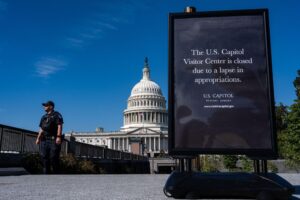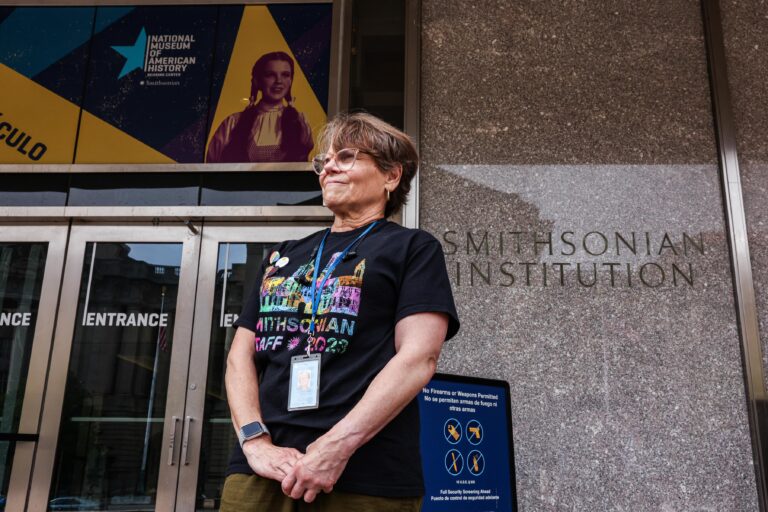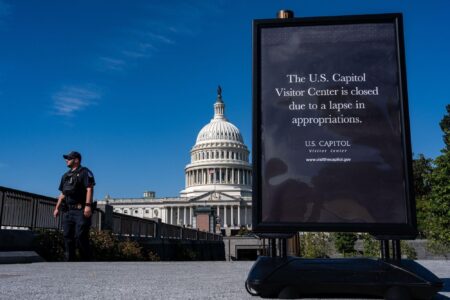Smithsonian Reaffirms Exclusive Hiring Authority Amid Political Disputes
In the midst of escalating political controversies involving former President Donald Trump, the Smithsonian Institution has unequivocally confirmed that the power to appoint and dismiss personnel is vested solely in its Secretary. This assertion addresses ongoing public speculation and conflicting narratives about who holds administrative control within the organization. By emphasizing this centralized authority, the Smithsonian reinforces its dedication to transparent governance and shields its operational decisions from external political interference.
Highlights of the Smithsonian’s position include:
- Consolidated Decision-Making: Employment actions are exclusively managed by the Secretary, ensuring consistent leadership direction.
- Institutional Autonomy: The Smithsonian operates independently of political pressures, safeguarding its cultural and scientific mission.
- Clear Procedures: Recruitment and termination follow rigorous internal protocols to uphold fairness and accountability.
| Position | Authority | Responsibility |
|---|---|---|
| Secretary | Hiring & Firing | All staff roles |
| Deputy Secretary | Advisory Role | Supports policy development |
| Outside Officials | No Personnel Authority | Excluded from staffing decisions |
Consequences of the Hiring Freeze on Smithsonian’s Functionality and Workforce
The Smithsonian’s reaffirmation of the Secretary’s exclusive hiring authority coincides with a hiring freeze that has introduced operational challenges across its museums and research centers. Critical vacancies remain unfilled, impeding the institution’s capacity to sustain exhibitions, advance research projects, and deliver educational programming. These delays have created administrative bottlenecks, slowing down project approvals and stalling workforce growth initiatives essential for enhancing visitor engagement and institutional innovation.
Employee morale has been adversely affected as existing staff face heavier workloads without additional personnel support. Concerns about job stability have grown due to the centralized control over staffing decisions. Notable impacts include:
- Decreased frequency and scale of public events and outreach activities
- Postponements in artifact preservation and documentation efforts
- Fewer opportunities for staff training and career advancement
| Area of Operation | Severity of Impact | Examples |
|---|---|---|
| Exhibition Coordination | Severe | Delayed exhibit launches, understaffing |
| Scientific Research | Moderate | Hiring freezes for project staff, postponed publications |
| Community Engagement | Severe | Reduced event scheduling, limited outreach |
| Facility Maintenance | Moderate | Deferred repairs, backlog in conservation work |
Insights into Smithsonian’s Institutional Independence and Leadership Framework
Experts analyzing the recent conflict involving former President Trump and the Smithsonian emphasize that the exclusive hiring and firing prerogative of the Secretary is a cornerstone of the institution’s autonomy. This clear division of authority protects the Smithsonian from becoming entangled in partisan disputes, ensuring that its cultural and scientific missions remain untainted by political agendas. Maintaining such independence is critical for preserving the credibility and effectiveness of national institutions.
Key elements reinforcing this autonomy include:
- Statutory Authority: The Smithsonian’s founding legislation explicitly assigns hiring and firing powers to the Secretary, limiting external interference.
- Operational Insulation: Routine management decisions are safeguarded from political influence through established governance protocols.
- Accountability to Mission: The Secretary’s responsibilities are aligned with institutional goals rather than political considerations, ensuring mission-focused leadership.
| Authority Entity | Role | Effect |
|---|---|---|
| Secretary | Personnel Management | Direct oversight of staffing decisions |
| Board of Regents | Governance Oversight | Ensures mission adherence and policy guidance |
| Federal Government | Funding & Legislative Support | Limited involvement in daily management |
Strategies to Preserve Governance Stability Amid Administrative Disputes
To uphold operational continuity during periods of administrative conflict, it is vital to establish and respect clear boundaries of authority. Centralizing hiring and firing powers exclusively with the Secretary reduces the risk of unauthorized personnel changes that could disrupt institutional stability. Transparent communication channels should be maintained to swiftly address disagreements and prevent escalation, fostering a culture of accountability and trust.
Moreover, implementing formal conflict resolution frameworks and contingency plans can help mitigate the impact of internal disputes. Structured mediation processes and enhanced interdepartmental collaboration serve as buffers against governance disruptions. The following table summarizes recommended approaches for sustaining stability during challenging times:
| Approach | Objective | Advantage |
|---|---|---|
| Authority Centralization | Restrict hiring/firing to Secretary | Prevents conflicting staffing decisions |
| Open Communication | Facilitate transparent dialogue | Reduces misunderstandings and rumors |
| Formal Mediation | Provide structured dispute resolution | Resolves conflicts without operational disruption |
| Contingency Planning | Prepare for governance challenges | Ensures continuity of operations |
Conclusion
As tensions involving former President Trump continue to unfold, the Smithsonian Institution has made it clear that the Secretary alone holds the authority over hiring and firing decisions. This reaffirmation delineates the limits of administrative control amid political pressures and highlights the Smithsonian’s steadfast commitment to its governance principles. Moving forward, the institution’s ability to balance public scrutiny with its autonomous leadership will be critical in preserving its mission and operational effectiveness.





